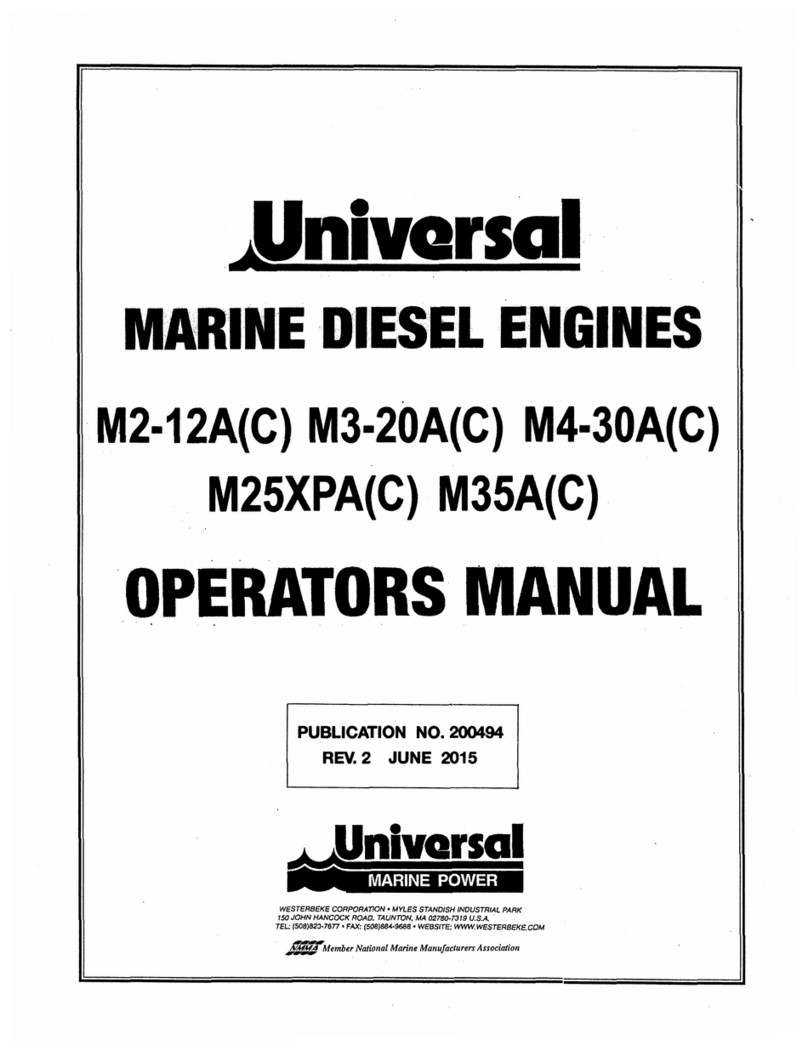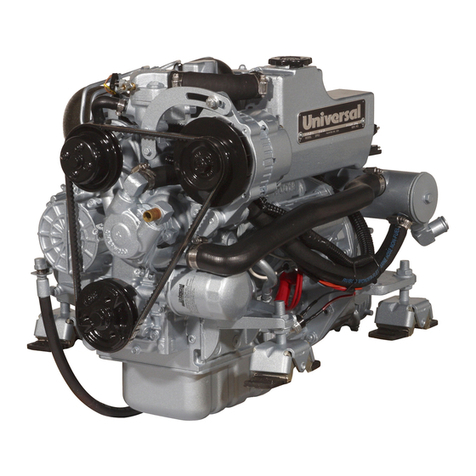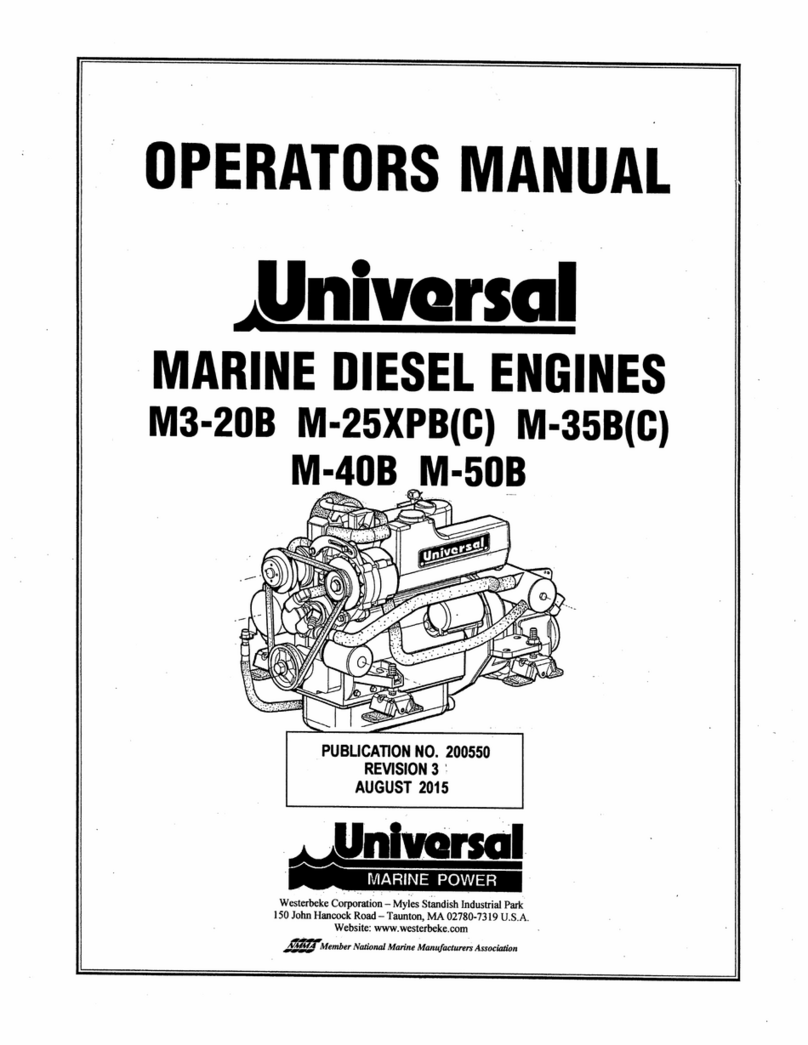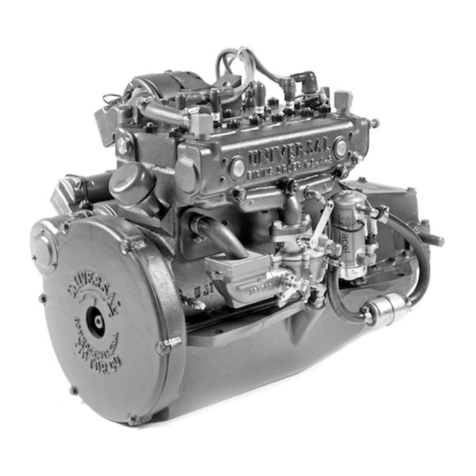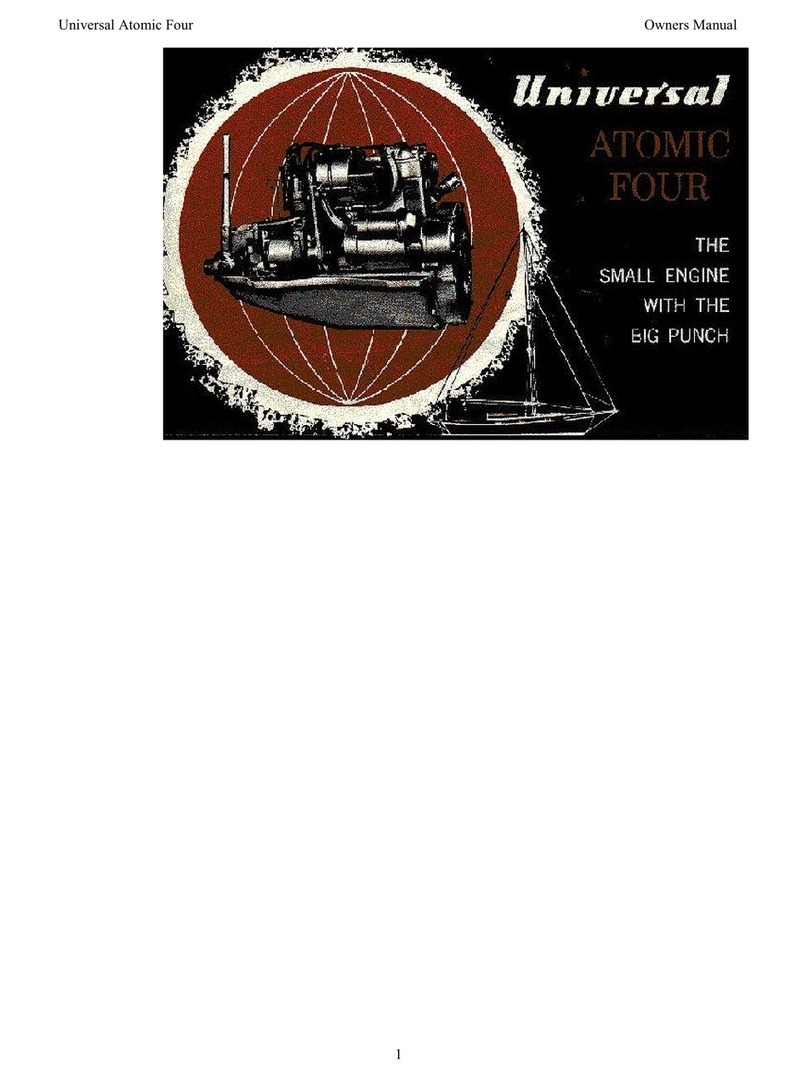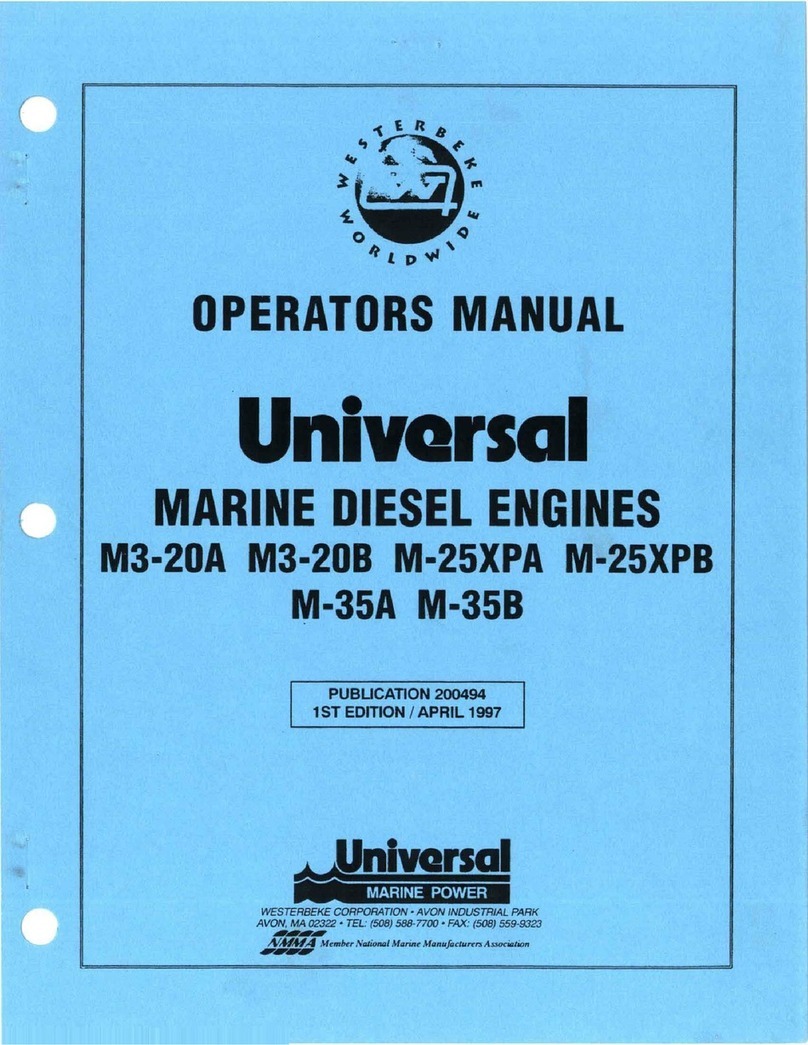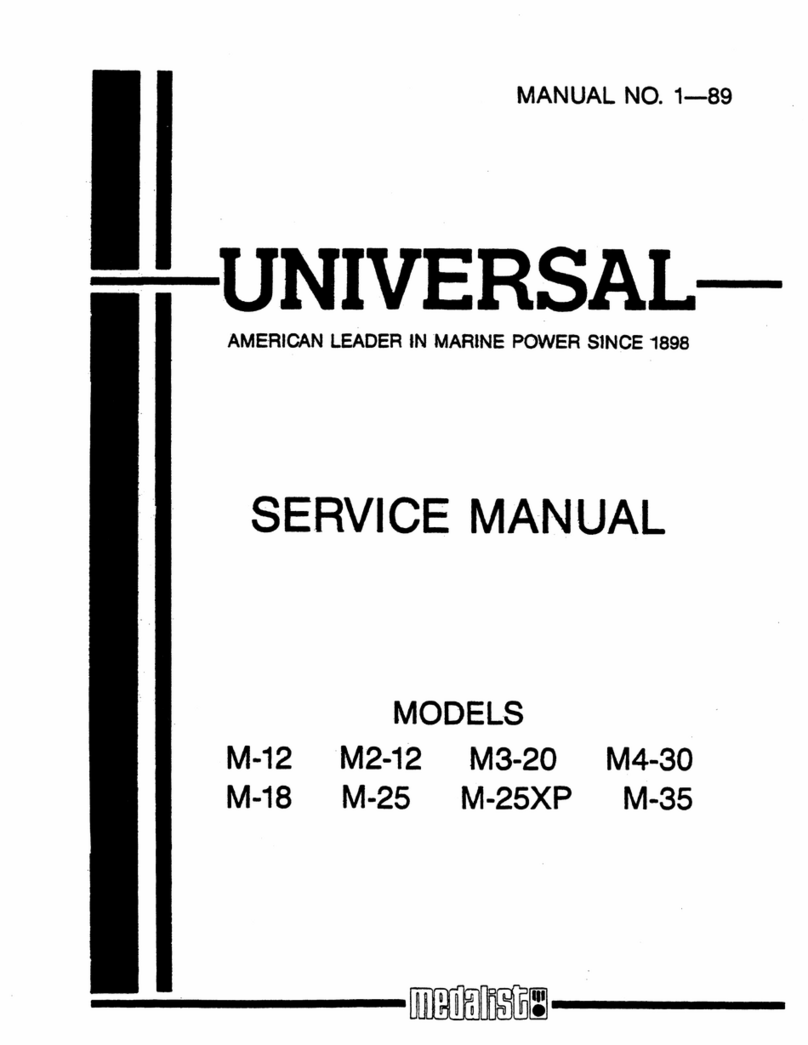
INTRODUCTION
ENGINE
OVERHAUL
This service manual contains detailed information relating
to the servicing and overhaul
of
the Universal M3-20B
marine diesel engine. Information about the construction
and function
of
the various systems and components can
be
found in the Description sections. For the major engine
overhaul procedure, refer to the
ENGINE
DISASSEMBLY
&
REASSEMBLY
and
ENGINE
SERVICE
sections. Additional
service information for specific components and systems
may
be
found by referring to the TABLE
OF
CONTENTS
and the INDEX. Refer also to your UNIVERSAL parts
Catalog.
These service procedures are intended for the guidance
of
suitably equipped and staffed marine engine service and
rebuilding facilities, and should only
be
undertaken by such
facilities and their personnel.
PRODUCT
SOFTWARE
Product software (tech data, parts lists, manuals, brochures
and catalogs) provided from sources other than UNIVER-
SALare not within UNIVERSAL'S CONTROL.
UNIVERSAL CANNOT
BE
RESPONSmLE FOR THE
CONTENT
OF
SUCH SOFTWARE, MAKES NO WAR-
RANTIES OR REPRESENTATIONS WITH RESPECT
THERETO, INCLUDING ACCURACY, TIMELINESS OR
COMPLETENESS THEREOF AND WILL IN NO EVENT
BE
LIABLE FORANY TYPE
OF
DAMAGE OR INJURY
INCURRED IN CONNECTION WITH ORARISING OUT
OF
THE FURNISHING OR USE
OF
SUCH SOFTWARE.
UNIVERSAL customers should also keep in mind the time
span between printings
of
UNIVERSAL product software
and the unavoidable existence
of
earlier UNIVERSAL manu-
als. Product software provided with UNIVERSAL products,
whether from UNIVERSAL
or
other suppliers, must not and
cannot
be
relied upon exclusively as the definitive authority
on the respective product. It not only makes good sense but
is imperative that appropriate representatives
of
UNIVER-
SAL
or
the supplier in question be consulted to determine
the accuracy and currentness
of
the product software being
consulted by the customer.
NOTES,
CAUTIONS
AND
WARNINGS
As this manual takes you through the service procedures
and troubleshooting
of
your marine engine, critical informa-
tion will be highlighted by NOTES, CAUTIONS, and WARN-
INGS. An explanation follows:
NOTE:
An
operating procedure essential to note.
A
CAUTION:
Procedures,
which
if
not
strictly
observed,
can
result
in
the
damage
or
destruction
of
your
engine.
A
WARNING:
Procedures,
which
if
not
properly
fol-
lowed,
can
result
in
personal
injury
or
loss
of
life
•
CUSTOMER
IDENTIFICATION
CARD
Customer Identification
UNIVERSAL OWNER
MAIN STREET
HOMETOWN, USA
Model M3-20B
Expires
9/12101
Ser.
#XXXX-D608
The UNIVERSAL engine serial number is an alphanumeric
number that can assist in determining the date
of
manufac-
ture
of
your UNIVERSAL engine. The manufacturer's date
code is placed at the end
of
the engine serial number and
consists
of
a character followed by three numbers. The
character indicates the decade (D=1990s, E=20oos), the first
number represents the year in the decade, and the second
and third numbers represent the month
of
manufacture.
ORDERING
PARTS/SERIAL
NUMBER
LOCATION
Whenever replacement parts are needed, always provide
the engine model number and engine serial number as they
appear on the silver and black identification nameplate
located on the side
of
the engine's exhaust manifold. The
engine serial number can also
be
found stamped into the
engine block on the left side
of
the engine below the cylin-
der head cover. You must provide us with this information
so we may properly identify your engine. In addition,
include a complete part description and part number for
each part needed (see the separately furnished Parts List).
Also insist upon UNIVERSAL packaged parts because will
fit
or
generic parts are frequently not made to the same
specifications as original equipment.
~
NOTE:
Component locations in this manual are referenced
from thefront
of
the engine which is the pulley/drive belt
end.
Left
and
right sides are determined
as
follows: imag-
ine straddling the engine,
facing
in the same direction as
thefront
of
the engine: the left side is
at
your
left, the right
side is
at
your
right. The cylinder
number
sequence starts
with the No. I cylinder located
at
thefront
of
the engine.
• •
Unlvanal
MARINE POWER
2
